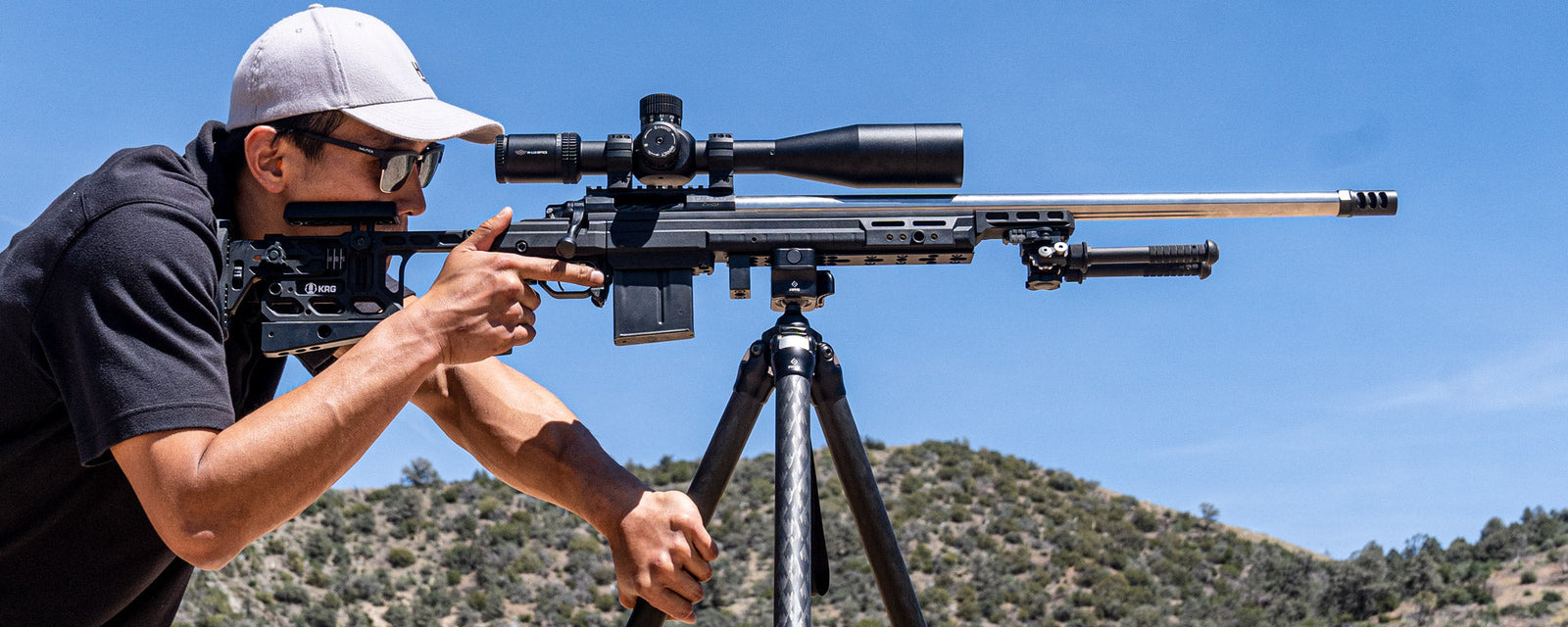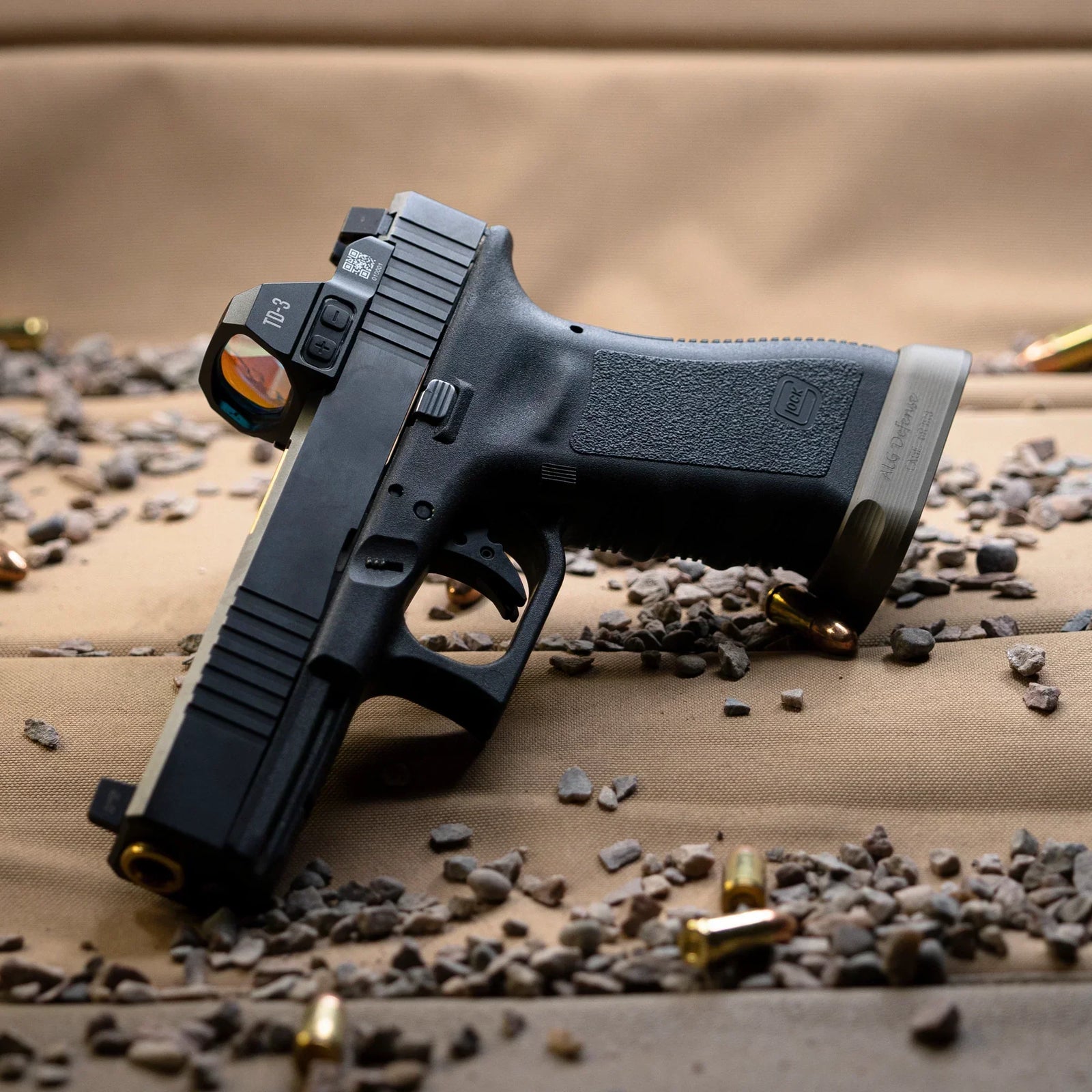Factors Affecting Rifle Shooting Stability and Accuracy
Precision rifle shooting demands more than just mechanical skill or high-end equipment—it requires a deep understanding of the shooter’s own physiology. While external factors such as wind, temperature, and terrain certainly influence shot accuracy, it is often the shooter’s physical condition that can ultimately determine success.

Body Position and Skeletal Support
The foundation of accurate rifle shooting begins with the shooter's body position. Whether shooting prone, kneeling, sitting, or standing, the shooter’s skeletal structure must provide maximum support for the rifle. The principle here is simple: use bones rather than muscles to support the weapon. Bones are a lot more rigid.
Prone Position: This is the most stable shooting position because it maximizes contact with the ground, minimizing the support needed from the shooter. The shooter’s elbows should form a triangle with the rifle, and the body should be aligned behind the rifle to manage recoil effectively. The rifle rests primarily on the skeletal structure—particularly the forearms, collarbone, and shoulder girdle—minimizing muscle strain and the associated instability.
Standing Position: In contrast, the standing position is the least stable, as it demands significant muscular support. The shooter must rely on core strength and balance, requiring fine neuromuscular control to maintain a steady aim.
Muscle Control and Fine Motor Skills
Muscle engagement plays a crucial role in maintaining a steady aim and executing a smooth trigger pull. However, more muscle activity doesn't necessarily mean more control.
Muscle Fatigue: If a shooter relies heavily on muscles instead of skeletal support, fatigue will quickly set in, reducing stability and causing unintentional movement. For this reason, expert marksmen train to achieve positions where muscles are relaxed and the bones carry most of the load.
Isometric Stability: Maintaining rifle alignment requires isometric contraction—muscles contract to hold a position without changing length. The challenge here lies in holding a position steadily without inducing tremors, which can be caused by overexertion or fatigue. Generally 6-8 seconds is a safe maximum.
Tremors and Muscle Fatigue: Even minor involuntary muscle movements, such as physiological tremors (low-frequency, rhythmic shaking), can have a significant impact at long ranges. These tremors are amplified through the rifle, especially through high magnification scopes or when shooting small targets.
Trigger Control: The finger used to pull the trigger must engage in a fine motor task that is precise and isolated. Any excess movement from the rest of the hand or arm can misalign the barrel at the critical moment. This is why shooters practice dry firing and controlled trigger squeeze to develop neuro-muscular coordination.

Respiration and Breath Control
Respiration introduces rhythmic movement into the shooter's body, particularly in the chest and shoulders. Uncontrolled breathing can move the rifle up and down by several millimeters—enough to miss a target entirely at long distances.
Breathing Cycle: The most stable part of the respiratory cycle is the natural pause after exhalation. During this phase, the diaphragm is relaxed, and there's minimal movement in the chest and shoulders. Shooters can train to fire during this natural respiratory pause, usually lasting 3–10 seconds.
Breath-Holding Risks: While holding the breath briefly is necessary, extended breath-holding can cause hypoxia (oxygen deficiency), leading to lightheadedness, increased heart rate, and muscle tremors. Therefore, timing and consistency in breathing patterns are essential for accuracy.
Cardiovascular Influence and Heart Rate
The shooter’s heartbeat, though subtle, causes small movements in the body—particularly when the rifle rests against the chest or is supported by parts of the body close to major arteries.
Heartbeat Transmission: In prone and supported shooting positions, the pulse from the chest or arms can be transmitted to the rifle, causing minute oscillations. These movements can shift the point of aim slightly, affecting shot placement, especially at long ranges. In more unsupported positions, the heartbeat is a relatively minor concern alongside the other factors at play.
Heart Rate Control: A lower resting heart rate minimizes these movements. Trained shooters often develop the ability to control their heart rate through breathing techniques and physical conditioning. Biathletes, for example, must shoot accurately immediately after intense physical exertion, so they train to shoot between heartbeats.
Shooting Between Beats: The interval between two heartbeats is when the body is most stable. While this level of precision requires experience, it demonstrates the possibility of cardiac awareness in shooting performance.
Vision and Eye Dominance
Clear and stable vision is crucial for accurate shooting. Several physiological aspects of vision affect marksmanship:
Eye Dominance: Most people have a dominant eye that provides more accurate visual information to the brain. Shooters must use their dominant eye to align with the sights or scope. Shooting with the non-dominant eye often results in parallax error and misalignment.
Visual Acuity: Poor eyesight—whether due to astigmatism, myopia, or presbyopia—can impair the shooter’s ability to focus on the front sight or target. Even minor issues can drastically reduce accuracy. Hence, many marksmen use corrective lenses or optics that compensate for vision deficiencies.
Eye Fatigue and Strain: Prolonged focus through scopes, especially at high magnification, can strain the eye muscles and reduce image clarity. Dry eyes, blinking, or excessive tear production can also obscure vision at critical moments.
Depth Perception and Parallax: When using scopes, the eye must align with the ocular lens perfectly. Any off-center alignment creates a parallax error—apparent movement of the reticle against the target—which leads to inaccuracy. Consistent cheek weld and head position are essential to minimize this, especially when a scope does not have the ability to adjust its parallax setting.
Neuromuscular Coordination and Training
Precision shooting demands refined neuromuscular coordination—the seamless integration of the nervous system and muscles. This coordination is developed through consistent training and repetition.
Muscle Memory: Repetitive practice builds muscle memory, allowing shooters to perform complex tasks—like aligning sights, managing recoil, and squeezing the trigger—without conscious effort. This frees mental bandwidth for situational awareness and target analysis.
Proprioception: This is the body's ability to sense its position in space. Shooters rely on proprioception to maintain consistent body alignment and rifle position, especially when visual cues are limited (e.g., in low light or awkward shooting positions).
Hand-Eye Coordination: A critical component of shooting, this skill ensures that visual input translates into precise physical action. It is especially vital during dynamic shooting scenarios, such as competitions or tactical operations.
Mental State and Stress Physiology
The psychological and physiological aspects of stress can dramatically affect shooting performance. Stress increases heart rate, muscle tension, and erratic breathing—all of which compromise stability.
Adrenaline and Cortisol: Under stress, the body releases adrenaline and cortisol, preparing for "fight or flight." While useful in emergencies, these hormones impair fine motor control, increase tremors, and shorten breath control windows.
Performance Anxiety: Even in controlled settings, anxiety can trigger physiological responses similar to stress. Competitive shooters often report higher heart rates, sweaty palms, and difficulty focusing during tournaments.
Cognitive Load: Multitasking—such as calculating wind drift, range, and bullet drop—adds cognitive load. When overloaded, the brain's motor functions may falter, leading to delayed or poorly timed shots.
Stress Management Techniques: Elite shooters use techniques such as box breathing, mindfulness, and visualization to reduce stress and maintain physiological control. Regular exposure to high-pressure scenarios also helps build tolerance and resilience.
Final Words
Mastering rifle accuracy goes far beyond understanding ballistics and equipment. It demands a nuanced grasp of one’s own body—its strengths, limits, and responses to physical and mental stimuli. Physiological factors such as skeletal alignment, muscle control, respiration, heart rate, vision, and stress responses all influence a shooter's ability to remain stable and accurate.
By cultivating awareness and control over these physiological systems, shooters can not only improve their technical skill but also enhance their consistency under pressure. Ultimately, the path to precision lies in harmonizing the body and mind to work seamlessly with the machine in the shooter’s hands.





Leave a comment (all fields required)